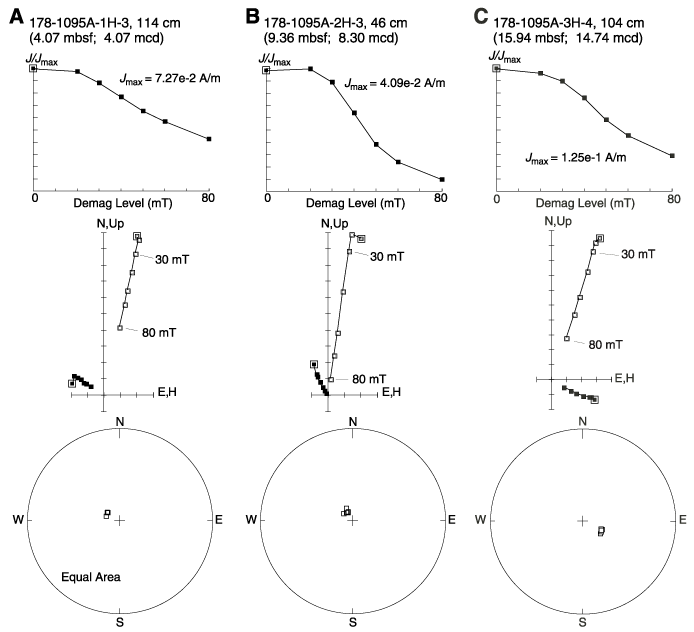
Figure F2. AF demagnetization results from U-channel samples from Site 1095. The top diagrams show the intensity variation with progressive demagnetization; the middle diagrams show vector end points on a vector demagnetization diagram (orthogonal projections: open squares = inclinations, solid squares = declinations); and the bottom diagrams show the magnetization directions on equal area projections (open squares = directions with negative inclinations). The first four intervals (A-D) are from U-channel samples taken from archive-half core sections, which had been subjected to peak AF demagnetizing fields of 20 mT during Leg 178. We remeasured the magnetization of each U-channel sample (0 mT step) prior to beginning progressive demagnetization at 20 mT; hence, the difference between the 0- and 20-mT steps is only indicative of the magnetization acquired since Leg 178 or of slight differences in the calibration of the demagnetization devices used on the ship and shore. Acquisition of small viscous components by the lowest-coercivity magnetic minerals is probably the cause of the difference because calibration differences appear to be negligible based on comparison of many demagnetization results. In contrast, the last two intervals (E and F) are from working-half core sections, which were not subject to any demagnetization prior to collection of the U-channel samples. Both intervals display a low-coercivity, steeply downward-directed component that is removed by demagnetization at 10-20 mT. This is a drilling overprint, which is evident to some degree in nearly every ODP core collected (e.g., Shipboard Scientific Party, 1999a). (A) Interval 178-1095A-1H-3, 114 cm (4.07 mbsf = 4.07 mcd), has a higher coercivity than deeper intervals. Similar behavior was also observed for the upper 18 m of Site 1096 (Brachfeld et al., Chap. 14, this volume). A-C are all normal polarity intervals from the Brunhes Chron, D is a reversed polarity interval from the Matuyama Chron, E is a reversed polarity interval from Chron C2Ar, and F is a normal polarity interval from Subchron C3n.1n. NRM = natural remanent magnetization.
A. Sample 178-1095A-1H-3, 114 cm. B. Sample 178-1095A-2H-3, 46 cm. C. Sample 178-1095A-3H-4, 104 cm.



![]()